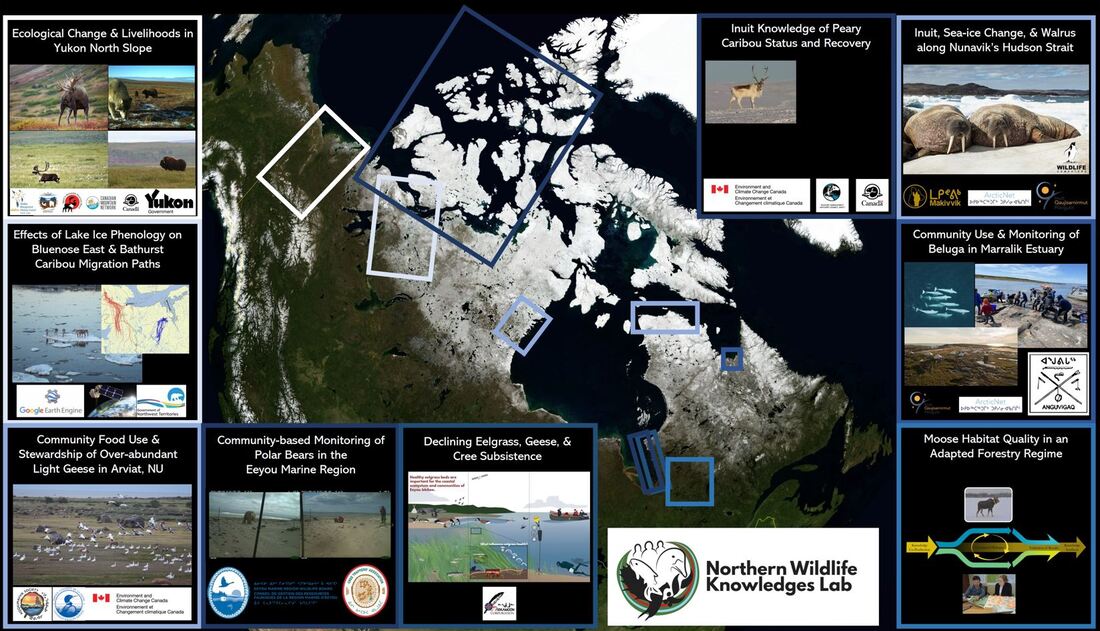OUR RESEARCH & APPROACHES
1) Wildlife Biologging Across Space and Time
We aim to capitalize on recent advances in biologging tools to advance knowledge regarding the role of physiology and behaviour in shaping the abundance, distribution, health, and coexistence of wildlife populations across environmental gradients. We use different biologging techniques, including external tags, trail cameras, tissue analysis, acoustics, etc., to monitor movement, activity, and energetic of various wildlife species across different landscapes, from the boreal forest of southwestern Yukon to the coastal waters of Baffin Island. Our research is conducted both in the lab and in the field, often in collaboration with northern communities or one of our many partners.
2) Wildlife, Environmental Change, and Local Indigenous Food Systems
In collaboration with many northern research partners and collaborators, including federal and provincial governments, private corporations, and indigenous organizations, we are interested in understanding, predicting and monitoring impacts of environmental change on traditionally harvested wildlife species. Our approach combines community-based participatory research with studies of climatic and environmental determinants of the distribution, abundance, and health of traditional food and furbearing species. We work in close partnership with northern communities to design and implement locally relevant field-based research at the interface of scientific and traditional ecological knowledge.
See www.weclifs.net for more information.
We aim to capitalize on recent advances in biologging tools to advance knowledge regarding the role of physiology and behaviour in shaping the abundance, distribution, health, and coexistence of wildlife populations across environmental gradients. We use different biologging techniques, including external tags, trail cameras, tissue analysis, acoustics, etc., to monitor movement, activity, and energetic of various wildlife species across different landscapes, from the boreal forest of southwestern Yukon to the coastal waters of Baffin Island. Our research is conducted both in the lab and in the field, often in collaboration with northern communities or one of our many partners.
2) Wildlife, Environmental Change, and Local Indigenous Food Systems
In collaboration with many northern research partners and collaborators, including federal and provincial governments, private corporations, and indigenous organizations, we are interested in understanding, predicting and monitoring impacts of environmental change on traditionally harvested wildlife species. Our approach combines community-based participatory research with studies of climatic and environmental determinants of the distribution, abundance, and health of traditional food and furbearing species. We work in close partnership with northern communities to design and implement locally relevant field-based research at the interface of scientific and traditional ecological knowledge.
See www.weclifs.net for more information.

